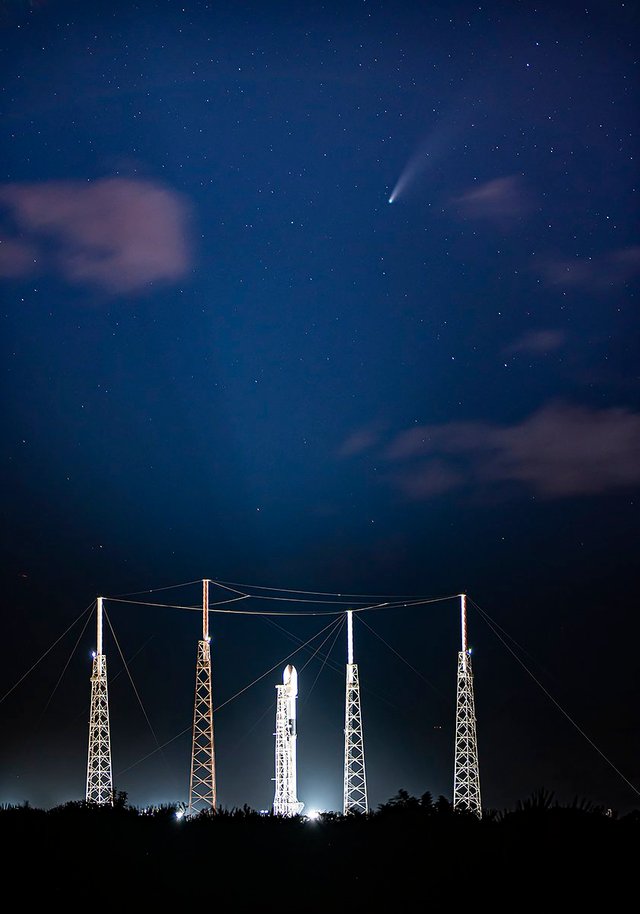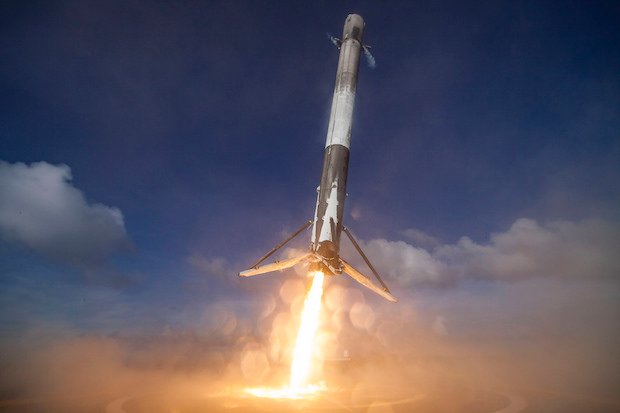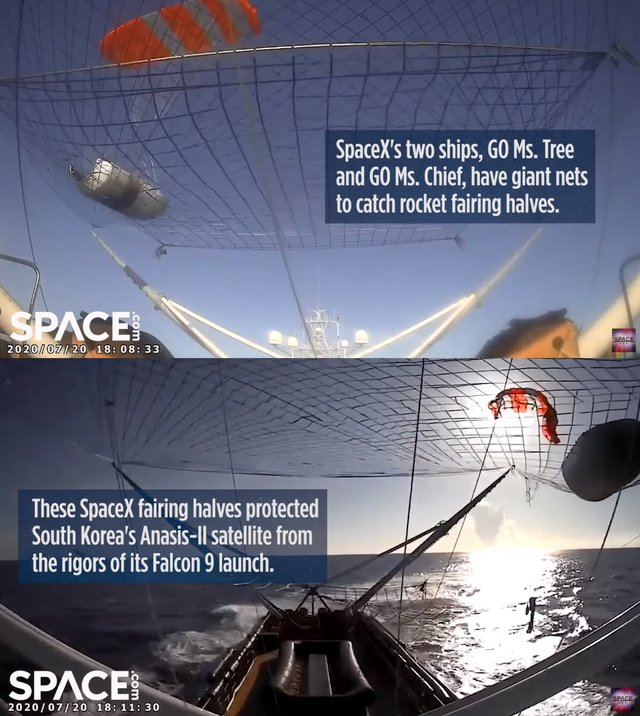
Falcon 9 Booster B1058.2 stacked with 2nd stage and Korean military payload stand ready on the launch pad as comet NEOWISE passes overhead.
Yesterday, July 20, 2020, after several delays and scrubs, SpaceX finally launched a Falcon 9 on the Anasis II mission for S. Korea.
The payload, built by Lockheed Martin for the S. Korean military was successfully deployed into a Geostationary Transfer Orbit following the 2nd burn of the 2nd stage's vacuum-optimized Merlin-D engine. The burn was completed about a half-hour after the flawless lift off from Space Launch Complex-40 at Cape Canaveral.
This was the 2nd flight of Booster 1058 which, as you may recall, made its first launch just a couple months ago, carried astronauts Bob Behnken and Doug Hurley to the International Space Station.
This is the shortest turnaround time for any SpaceX booster from landing to reuse.
After stage separation, the booster performed its flip maneuver using the on-board cold-gas thrusters, reached its apogee, and began its decent back to earth. A few seconds before re-entering the Earth's atmosphere, it ignited three of its nine Merlin engines in order to slow it down enough to safely re-enter the atmosphere. That burn lasted about 20 seconds, then about one minute later, it ignited just one of the nine engines in order to softly land on the Autonomous Spaceport Drone Ship, Just Read the Instructions.

B1058.2 Successfully landing on Just Read The Instructions.
In addition to setting the record for the fastest booster turn-around time, this launch was also the first one in which both fairing halves were successfully caught in the nets of the Fairing Recovery Ships GO Ms Tree and GO Ms Chief.
SpaceX has been working on perfecting fairing recovery for a couple of years now and it has been challenging to say the least. Each of the fairings measures about 5.2 meters (17 feet) in diameter and 13 meters (43 feet) in length. The two halves sit at the top of the 2nd stage and protect it from the aerodynamic forces as well as acoustic and vibrational forces. The cost of these parts are roughly about $6 million USD.

Because of the corrosive nature of seawater, it is desirable to retrieve them without any contact with the ocean's surface. The fairings deploy parafoil chutes and steer themselves towards the recovery ships using cold gas thrusters. Although SpaceX has successfully retrieved fairing halves out of the water in previous failed catch attempts, most SpaceX customers do not want to entrust their payloads to one of these fairings. SpaceX has reused these contaminated and cleaned fairings for their own StarLink missions, however.
Below is a link to a video showing the successful catch one of these two fairings.